When Jennifer discovered a malnourished — but incredibly sweet — Siamese cat who had been abandoned near her home in Nashville, Tennessee, she rescued the underweight kitty and spent weeks trying to find her owner. However, no one claimed her, and on the morning of June 11, 2012, Jennifer awoke to the friendly Siamese cat sitting on her chest. “Suddenly, she took off,” remembers Jennifer, “and a few minutes later, I hear a growl, hiss, groan, then ‘MIEW MIEW MIEW!’ She gave birth to five babies.”
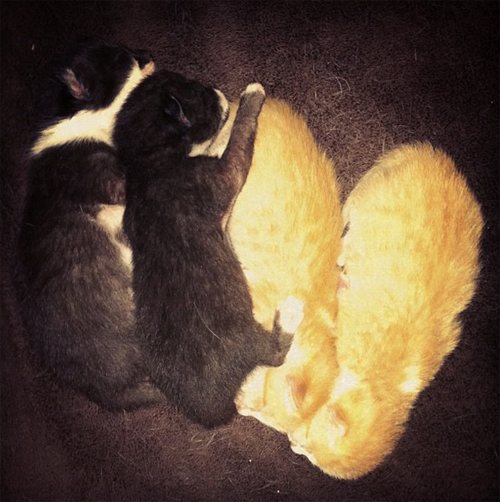
Sadly, two of the kittens passed away shortly after they were born, leaving three baby cats, including a black and white kitty Jennifer called Traveler. “He was the very first one to leave the den as a kitten,” explains Jennifer. “Once he realized his traveling abilities, there was no stopping him!”
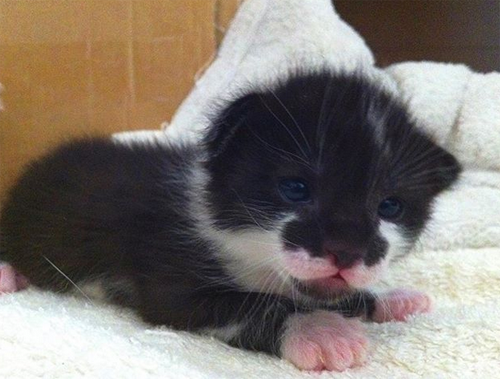
However, Jennifer noticed that Traveler didn’t move like a typical cat, and instead of walking, the little black and white kitten flopped and rolled to get where he wanted to go — which was everywhere!
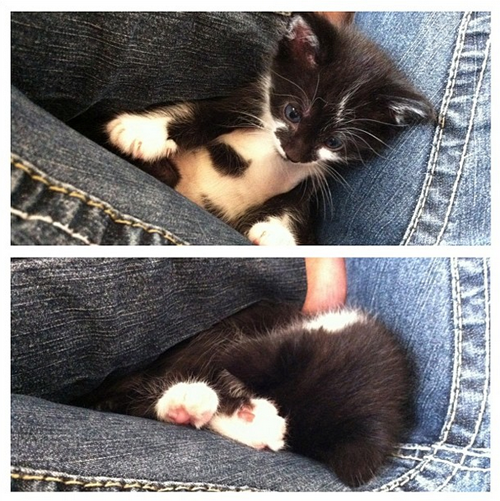
When Jennifer took the three kittens to the vet, she discovered that Traveler had severe cerebellar hypoplasia (CH), a non-progressive neurological condition that impacts balance and coordination. Jennifer learned that Traveler’s brother, a black and white kitten she named Panther, had a mild form of CH, while the third baby cat didn’t exhibit any signs of the neurological condition.
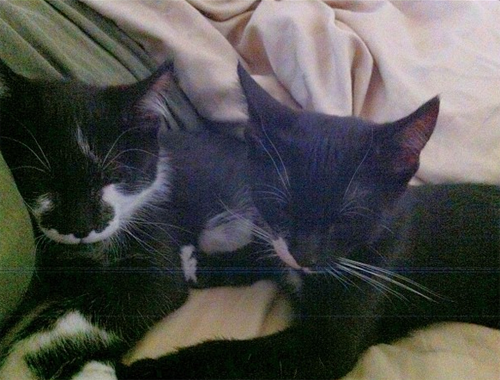
Cerebellar hypoplasia occurs in utero, usually when a pregnant cat is exposed to panleukopenia and the virus causes her unborn kittens’ cerebellums not to develop properly. However, CH can also occur when a cat is malnourished or exposed to toxins during pregnancy. “Their mother was vaccinated with the panleukopenia virus,” says Jennifer, “but when she was found, she was so skinny — for all I know, she could’ve been malnourished.”
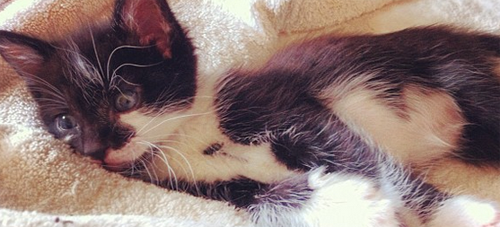
Jennifer — who already had two cats at the time — found a home for the mother and the kitten who didn’t have cerebellar hypoplasia, but she decided to adopt Traveler and Panther — fearing they might be euthanized otherwise — even though she knew very little about the neurological condition.
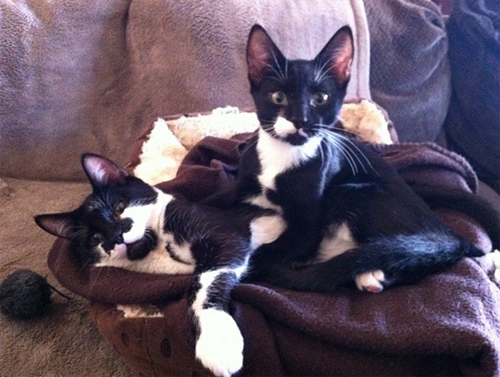
“At the time, I didn’t know anyone else that knew what CH was,” says Jennifer. “In the very beginning when Traveler was a kitten, our challenges were to figure out how to properly care for him, train him if possible, and to figure out a routine for the both of us.”
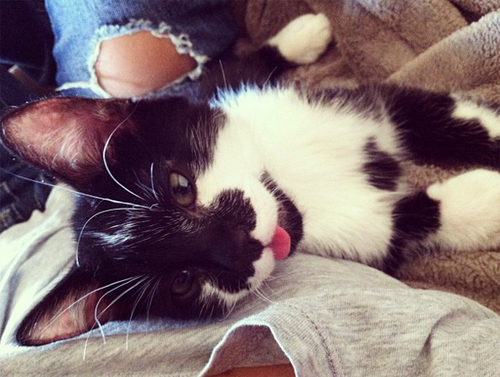
Jennifer quickly realized that one of the biggest challenges related to caring for a cat with severe CH involves helping them empty their bladder and bowels. “I had no choice but to use logic,” says Jennifer, and she combined what she knew about caring for cats, dogs, and babies, and devised a system and a routine for Traveler. To this day, this handsome tuxedo cat begins his mornings with food and water, and then Jennifer places Traveler on a waterproof mattress pad and uses a warm washcloth to encourage him to urinate and defecate.

Nearly six years later, Traveler almost never has accidents, and he’s even developed a specific meow that he uses to let his mom know if he needs to use the bathroom at an unscheduled time. Jennifer is confident that she was able to train Traveler through consistency, persistence, and positive reinforcement. “I always praised him for pooping,” says Jennifer, “even if he accidentally landed in it trying to move away. I praised him because he did it on his own without my help.”
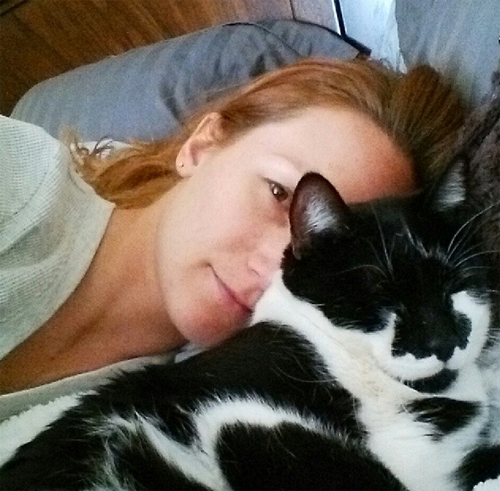
While many people with CH cats think these special needs felines are not aware that they’re different from other kitties, Jennifer believes that because Traveler can’t walk and use the litter box like his brother Panther, he knows there’s something unique about him. However, Jennifer is also certain that special needs cats like Traveler refuse to be limited by their conditions. “They don’t let their differences hold them back,” says Jennifer. “They become quite motivated and eventually adapt to their condition.”
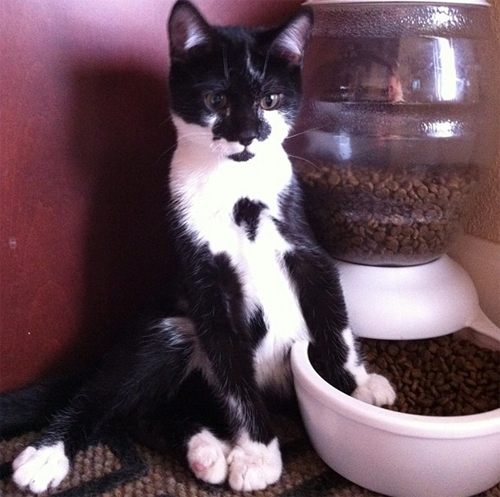
Even though Traveler can’t walk like a typical cat, this adorable tuxedo boy has a lot in common with the average feline. “Traveler’s absolute favorite thing in the world is to be propped up high,” says Jennifer, and while she was initially afraid of him falling from his perches, she soon realized that she had no reason to worry.
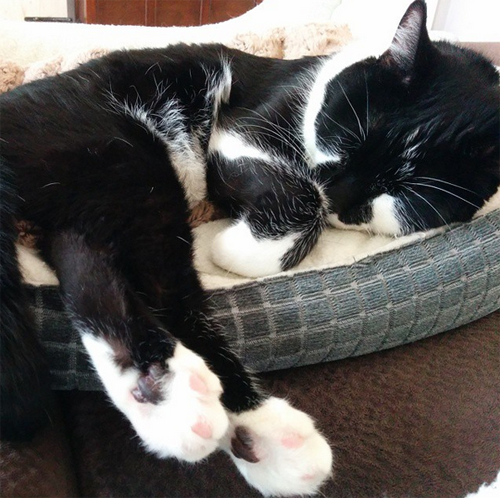
“He simply just wants to see his kingdom,” says Jennifer. “You will always see him up on a couch, chair, top of the couch, on top of my desk in his bed.” Like a typical kitty, this majestic black and white cat also needs to be adored, and his mom is more than happy to oblige his demands for affection.
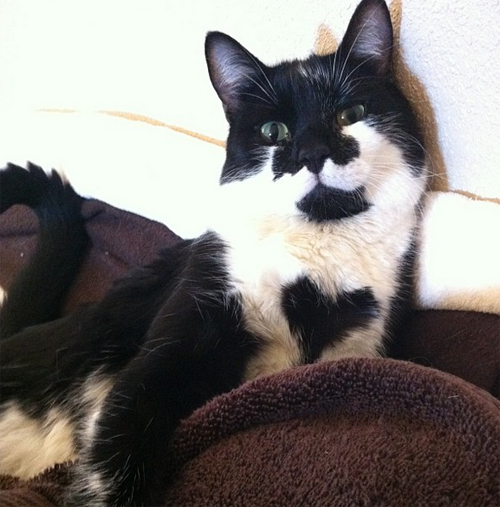
“He expects dozens of kisses on his face multiple times a day,” says Jennifer. Traveler uses lots of cues — both verbal and non-verbal — to get his mom to do his bidding, and he lets Jennifer know when he wants belly rubs simply by stretching to expose his fluffy tummy. “Most of all, he loves falling asleep to me talking to him,” says Jennifer. “If these things aren’t happening, he lets me know I’m slacking! He’s very verbal and knows what he wants.”

While CH impacts the brain, it has no affect on intelligence, and Jennifer believes Traveler is exceptionally smart and has taught her many important lessons. “Of all the cats I’ve spent my life around,” says Jennifer, “I have never known a cat so full of life, determination, motivation, and just all-around kick-ass as Traveler.”

In fact, Traveler — who refuses to give up until he gets what he wants — is an inspiration to Jennifer, who admires how relentless this handsome tuxedo cat can be when he’s got his mind set on something. “I don’t know how he does it because I’m long exhausted before he is,” says Jennifer, “And yet, he’s over there wobbling his head, licking his mane, with the most pleased, smug look on his face.”
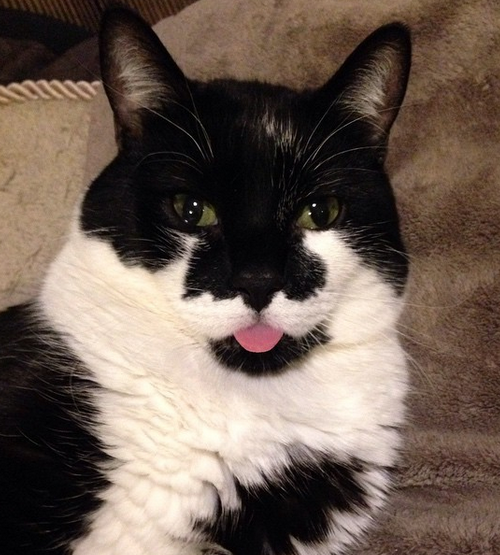
Traveler — and cats with severe CH like him — definitely need more assistance than the typical feline, but Jennifer believes he has an excellent quality of life and tending to his needs has helped her become more patient and more forgiving of herself and her own limitations.
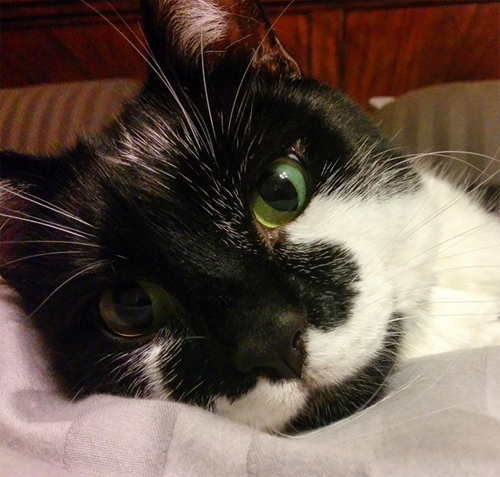
Jennifer credits Traveler — who can get exactly what he wants with an urgent meow or a meaningful stare — with teaching her the importance of communication — both verbal and non-verbal — and she’s certain through giving this special needs cat the life he deserves, he’s allowed her to become the person she was always meant to be.
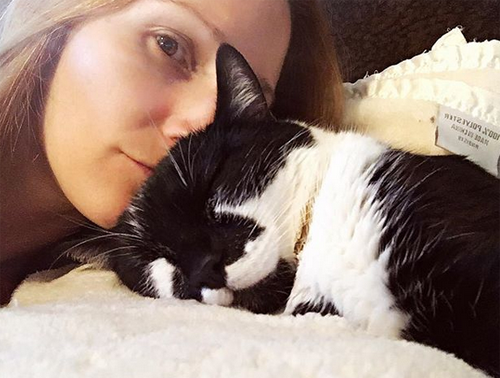
“He came to me at the right time, providing me some sense of direction and mindfulness in the hardest of times,” says Jennifer. “He represents the importance of simplicity; he represents making the most of what you have; he means life.”
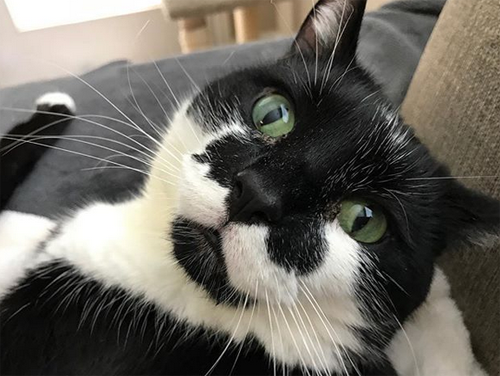
If you want to learn more about this adorable cat, you can follow Traveler on Instagram.



